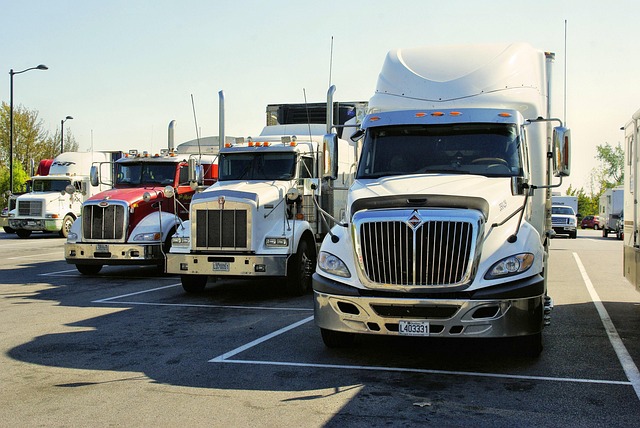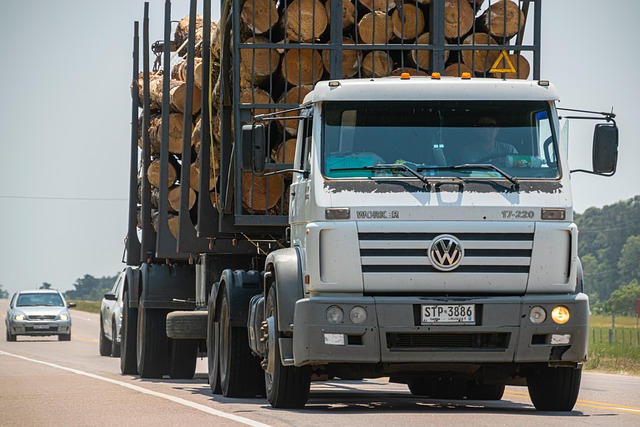Looking to register your car in California? This comprehensive guide walks you through the entire process, from understanding key requirements to receiving your official documents. We cover essential steps like gathering necessary papers and performing a DMV VIN verification, ensuring a smooth registration experience. By following these detailed instructions, you’ll be on the road in no time while adhering to California’s strict vehicle registration standards.
- Understand California Car Registration Requirements
- Gather Necessary Documents for DMV Visit
- Perform VIN Verification: Steps & Process
- Complete Application and Pay Fees at DMV
- Receive Your Vehicle Registration Documents
Understand California Car Registration Requirements

Before registering your car in California, it’s crucial to understand the state’s specific requirements. The California Department of Motor Vehicles (DMV) mandates several steps for new and transferred vehicle registrations. One key aspect is the DMV VIN verification process, which ensures that the vehicle’s unique identifier—the Vehicle Identification Number (VIN)—matches the data on record. This step is vital to prevent fraud and ensure the registration’s accuracy.
Additionally, California requires you to present specific documents, such as proof of insurance, a valid driver’s license, and the vehicle’s title. For out-of-state residents, a completed Form MV-58 (Certificate of Ownership/Power of Attorney) might be needed. Furthermore, some counties in California offer the option of mobile VIN inspection or online registration, providing convenience for those looking to streamline the car registration process.
Gather Necessary Documents for DMV Visit

Before heading to the California Department of Motor Vehicles (DMV), ensure you have all the required documents for a smooth registration process. The first step involves verifying your vehicle’s unique identifier, known as the Vehicle Identification Number (VIN). This is crucial for any car-related transaction, including registration. You can perform a DMV VIN verification, which is typically done through an online check or by visiting a local DMV office.
For this process, you’ll need important papers such as your vehicle’s title, current registration documents, and proof of insurance. Additionally, a mobile vin verifier or a professional vin inspection might be useful to ensure all details match before finalizing the registration.
Perform VIN Verification: Steps & Process

Before you begin the registration process, it’s crucial to ensure that your vehicle’s VIN (Vehicle Identification Number) is legitimate and matches the make and model of your car. This step, known as DMV VIN verification, is a vital part of car registration in California. The process involves cross-referencing the VIN with the manufacturer’s records to confirm its authenticity.
To perform this verification, you can opt for a mobile vin inspection or use a trusted mobile vin verifier app. These services allow you to quickly and easily enter your VIN into a database, which then checks it against official records. Once the system validates the VIN, it provides you with the necessary information to proceed with registration at your local California DMV office.
Complete Application and Pay Fees at DMV

After gathering all necessary documents, it’s time to visit your local California DMV office or complete the process online. The first step involves filling out a Vehicle Registration Application, ensuring every detail is accurate. This includes providing your personal information and vehicle specifications, such as make, model, year, and unique VIN (Vehicle Identification Number). A crucial part of this process is the dmv vin verification, where you’ll need to show proof of the vehicle’s identity through its VIN.
During your visit or online submission, you’ll also be required to pay the applicable fees for registration. These fees vary based on factors like the type of vehicle and its age. Once all paperwork is in order and fees are paid, you can expect a new registration certificate, license plate, and potentially, depending on your location, a mobile vin verification or inspection to confirm your vehicle’s details.
Receive Your Vehicle Registration Documents

After completing your vehicle purchase, it’s time to receive your car’s registration documents from the seller or dealership. These papers are crucial for legally operating your new vehicle in California. The package should include a Certificate of Ownership (also known as the ‘title’) and a Vehicle Registration Application form.
Before submitting your application, ensure you have all necessary details at hand, such as your personal information, the vehicle’s make, model, year, and unique identification number, commonly referred to as the Vehicle Identification Number (VIN). For added convenience and accuracy during the registration process, consider utilizing mobile VIN inspection services that allow for a quick verification of your car’s history.
Registering a car in California involves understanding state requirements, gathering essential documents, completing a DMV visit that includes VIN verification, and paying applicable fees. After a successful application, you’ll receive your vehicle registration documents, ensuring legal compliance and smooth driving in the Golden State. Remember, proper documentation and accurate information are key to a seamless process, so be prepared with all necessary materials before visiting your local DMV for a stress-free car registration experience.



